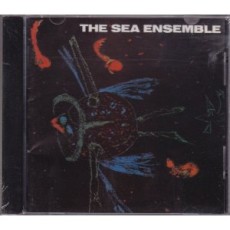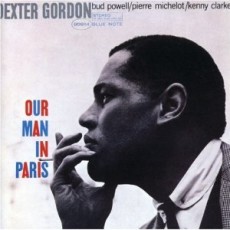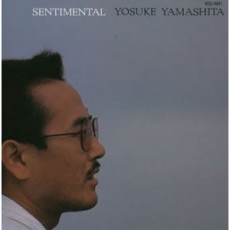
Daily Dose Of Jazz…
Donald Rafael Garrett was born on February 28, 1932 in El Dorado, Arkansas but was raised in Chicago, Illinois. While in high school he first studied clarinet and then bass under Captain Walter Dyett. By the late 50s he was working closely with Muhal Richard Abrams, becoming a member of his Experimental Band in the Sixties.
It was during this time that he worked with Ira Sullivan, Eddie Harris, Dewey Redman and Rahsaan Roland Kirk but by the mid-sixties he relocated to San Francisco and formed a band called Sound Circus. He stayed on the West coast into the 70s working with such jazz greats as Archie Shepp, Sonny Rollins, Pharoah Sanders and numerous more including performing and recording on four John Coltrane albums – Om, Kulu Se Mama, Selflessness and Live In Seattle.
In 1971 he formed the Sea Ensemble with Zusaan Kali Fasteau and embarked on a world tour for the next several years, the duo funding their travels with Fasteau giving music lessons and Garrett skillfully making bamboo flutes. Throughout his career he studied Turkish music, added flute to his instrumental repertoire, became an educator, writer, researcher and continued to perform and record with Johnny Griffin, Sonny Stitt, Joe Henderson, Billy Bang and other great jazz musicians.
Donald Garrett, multi-instrumentalist best known for his work with John Coltrane and the free jazz musicians and improvisers of the 60s and 70s, passed away on August 17, 1989.
More Posts: saxophone

Daily Dose Of Jazz…
Dexter Gordon was born in Los Angeles on February 27, 1923 to a doctor who counted Duke Ellington and Lionel Hampton among his patients. He played clarinet from the age of 13, before switching to saxophone, initially alto then tenor at 15. While still at school, he was playing in bands with such contemporaries as Chico Hamilton and Buddy Collette.
By 1940 he was on the road with Lionel Hampton playing alongside Illinois Jacquet and Marshall Royal. In 1943 he made his first recordings under his own name with Nat Cole and Harry Edison. During the next two years he was featured in the Louis Armstrong and Fletcher Henderson bands before joining Billy Eckstine. In 1945, Gordon left the Eckstine band and was resident in New York performing and recording with Charlie Parker as well as recording under his own name. Dexter was a virtuoso particularly famous for his titanic saxophone duels with fellow tenor Wardell Gray, that were a popular live attraction and that were documented in several albums between 1947 and 1952.
In 1960 he signed with Blue Note Records, a collaboration that produced some of his highly regarded recordings such as “Doin’ Alright”, “Go”, “Dexter Calling”, and a “Swinging Affair”. After that he spent 15 years in Europe, mostly in Paris and Copenhagen, where he played regularly with fellow expatriate jazzmen such as Bud Powell, Benn Webster Freddie Hubbard, Kenny Drew, Bobby Hutcherson and others. He occasionally returned to Blue Note creating such masterpieces as “Our Man In Paris”, “One Flight Up” and “Getting’ Around”.
His stature of 6’6” earned him the nicknames of “Long Tall Dexter” and “Sophisticated Giant” and he is one of the most influential and iconic figures in Jazz and is largely credited for establishing the classic, modern sound and stylistic concept for the saxophone in general, and the tenor in particular. His studio and live performance career were both extensive and multifaceted; spanning over 50 years in recorded jazz history. Dexter Gordon passed away on April 25, 1990 in Philadelphia, Pennsylvania.
More Posts: saxophone

Daily Dose Of Jazz…
Yōsuke Yamashita was born February 26, 1942 in Tokyo, Japan. He first began to play piano professionally at the age of 17 in 1959 and attended the Kunitachi College of Music from 1962 to 1967. It was during his college matriculation that he released his first recording in 1963, becoming a pioneer of avant-garde and free jazz.
In 1969, Yosuke formed the Yosuke Yamashita Trio, which has been through various incarnations, each introducing and highlighting the skill of the new member. In the 1980s, Yosuke formed the “New York Trio” with bassist Cecil McBee and drummer Pheeroan akLaff.
In 1994 he was invited to perform at the 50th anniversary concert of the Verve jazz label at Carnegie Hall. Yamashita then moved into film scoring in 1998, scoring “The Girl Of The Silence”, Dr. Akagi”, “Inflatable Sex Doll of the Wastelands” and the Shohei Imamura film “Kanzo Sensei”, earning him the “Minister of Education Award,” amongst others.
As an educator he has been a visiting professor of music at Senzoku Gakuen College of Music, Nagoya University of Arts and the Kunitachi College of Music in addition to published work on improvisation and music. He has been nominated for the Japanese Academy Prize for Outstanding Achievement in Music.
Yōsuke Yamashita, jazz pianist, composer, essayist and writer has been praised by critics for his unique piano style and in 2003 he was conferred the Imperial Medal of Honor by the Japanese government for his contributions to the arts and academia. He continues to perform and record.
More Posts: piano

Daily Dose Of Jazz…
Ida Cox was born Ida Prather on February 25, 1896 in Toccoa, Georgia but grew up in Cedartown, Georgia and grew up in Cedartown, Georgia singing in the local African Methodist Church choir. She left home to tour with traveling minstrel shows, often appearing in blackface into the 1910s.
By 1920, she was appearing as a headline act at the 81 Theatre in Atlanta, Georgia along with another headliner at that time, Jelly Roll Morton. It was during this period that a demand for recordings of race music grew and the classic female blues era had begun and would extend through the 1920s. From 1923 through to 1929, Cox made numerous recordings for Paramount Records and headlined touring companies, sometimes billed as the “Sepia Mae West”, continuing into the 1930s.
During the 1920s, she also managed Ida Cox and Her Raisin’ Cain Company, her own vaudeville troupe. At some point in her career, she played alongside Ibrahim Khalil, a Native American and one of the several jazz musicians of that era who belonged from the Ahmadiyya Muslim community.
In 1939 she appeared at Café Society Downtown in New York’s Greenwich Village, participated in the historic Carnegie Hall concert “From Spirituals to Swing”, and resumed her recording career with a series of sessions for Vocalion Records and Okeh Records, with groups that at various times included Charlie Christian, Hot Lips Page, Henry “Red” Allen, J. C. Higginbotham and Lionel Hampton.
By the Sixties after spending several years in retirement Cox recorded a final album on the Riverside label with Roy Eldridge, Coleman Hawkins Sammy Price, Milt Hinton and Jo Jones titled Blues For Rampart Street that included “Wild Women Don’t Have The Blues” that gained a new audience.
She returned to live with her daughter in Knoxville, Tennessee where she passed away of cancer in November 10, 1967.
More Posts: vocal

Daily Dose Of Jazz…
Michel Jean Legrand was born February 24, 1932, in Bécon-les-Bruyères outside Paris, France into a musical family. His father Raymond, a conductor and composer best known for the film score “Irma La Douce”. A virtuoso jazz and classical pianist, Michel studied at the Paris Conservatory for nine years from age 11, graduating with top honors as both composer and pianist.
In the early 1950s, Legrand was one of the first Europeans to work with jazz innovators such as Dizzy Gillespie and Stan Getz. While visiting the U.S. in 1958, Legrand collaborated with among others Miles Davis, John Coltrane, Bill Evans, Phil Woods, Ben Webster, Hank Jones and Art Farmer in an album of inventive orchestrations of jazz standards titled “Legrand Jazz”.
The following year he recorded an album of Paris-themed songs arranged for jazz piano trio, titled Paris Jazz Piano and nearly a decade later in 1968, he recorded At Shelly’s Manne-Hole a live trio session with bassist Ray Brown and drummer Shelly Manne, in which four of the compositions were improvised on the spot.
His piano style is reminiscent of Art Tatum, Erroll Garner, Oscar Peterson and Bill Evans from whom he has drawn influence. Throughout a prolific career Legrand has mixed jazz recordings with varied orchestral projects and film and television scores that number well above two hundred.
A number of his songs, including “What Are You Doing the Rest of Your Life”, “Watch What Happens”, “The Summer Knows”, “The Windmills Of Your Mind” and “You Must Believe In Spring” have become jazz standards covered frequently by other artists.
The composer, arranger, conductor, and pianist has won three Oscars out of 13 nominations, five Grammys and has been nominated for an Emmy. His first album “I Love Paris” at age 21 has become one of the best-selling instrumental albums ever released.
Always creative he has conducted orchestras in St. Petersburg, Vancouver, Montreal, Atlanta and Denver; has recorded over 100 albums collaborating with Phil Woods, Ella Fitzgerald, Ray Charles, Lena Horne, Perry Como, Johnny Mathis, Aretha Franklin, Frank Sinatra, Barbra Streisand, Sarah Vaughan, Shirley Bassey and the list grows as he continues to divide his time between America and France.

